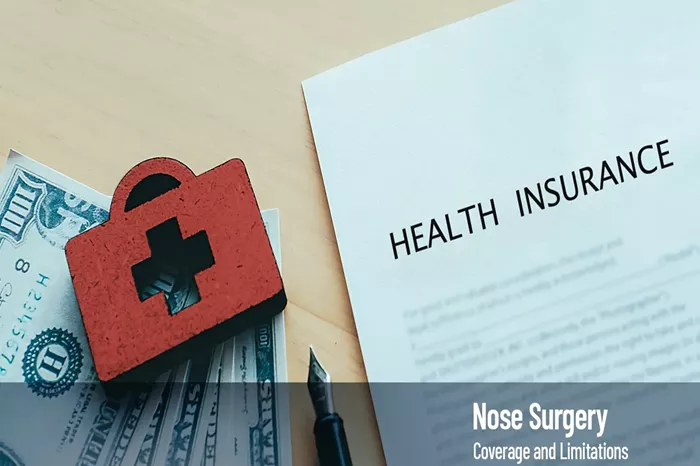Rhinoplasty, commonly referred to as a nose job, is a surgical procedure aimed at reshaping or repairing the nose. This procedure can be performed for both cosmetic and medical reasons. When considering rhinoplasty, one of the most common questions is about the cost, especially when insurance is involved. This article will explore the factors that influence the cost of rhinoplasty, how insurance can impact the overall expense, and what patients should expect financially.
Understanding Rhinoplasty
Types of Rhinoplasty
There are two main types of rhinoplasty: cosmetic and functional. Cosmetic rhinoplasty focuses on altering the appearance of the nose for aesthetic purposes. Functional rhinoplasty, on the other hand, is performed to correct nasal function, such as breathing problems or deformities caused by injury.
Reasons for Rhinoplasty
Patients may seek rhinoplasty for various reasons, including:
1.Improving the appearance of the nose
2.Correcting a deviated septum
3.Repairing nasal injuries
4.Enhancing breathing function
Factors Influencing the Cost of Rhinoplasty
Surgeon’s Expertise
The surgeon’s experience and reputation play a significant role in determining the cost of rhinoplasty. Highly experienced surgeons with a track record of successful procedures typically charge higher fees.
Geographic Location
The cost of rhinoplasty can vary widely based on the location of the practice. Surgeons in major metropolitan areas or regions with a high cost of living may charge more for their services.
Facility Fees
The type of facility where the surgery is performed also affects the overall cost. Procedures conducted in hospital settings may be more expensive than those performed in outpatient surgical centers.
Anesthesia Fees
Anesthesia is a crucial component of rhinoplasty, and the type of anesthesia used (local or general) can influence the cost. General anesthesia is typically more expensive than local anesthesia.
Pre- and Post-Operative Care
The cost of rhinoplasty includes pre-operative consultations, post-operative care, and follow-up visits. These services ensure the patient’s safety and satisfaction but add to the overall expense.
Complexity of the Procedure
The complexity of the surgery is another factor that affects the cost. More complex procedures that involve extensive reshaping or reconstruction will generally be more expensive than simpler cosmetic adjustments.
Rhinoplasty Costs Without Insurance
Average Cost
The average cost of rhinoplasty in the United States ranges from $5,000 to $10,000. This range varies based on the factors mentioned above.
Breakdown of Costs
Surgeon’s Fee: $3,000 – $7,000
Anesthesia Fees: $600 – $1,200
Facility Fees: $700 – $2,000
Pre- and Post-Operative Care: $500 – $1,000
See also: How Much Does Nose Job Cost In Philippines?
Insurance Coverage for Rhinoplasty
Cosmetic vs. Functional Rhinoplasty
Insurance companies generally do not cover procedures performed solely for aesthetic reasons. However, if the rhinoplasty is deemed medically necessary, such as for correcting a deviated septum or repairing damage from an injury, insurance may cover part or all of the cost.
Medical Necessity
For insurance to cover rhinoplasty, the procedure must be medically necessary. Documentation from a healthcare provider is required to demonstrate the necessity of the surgery. This may include evidence of breathing difficulties, chronic sinusitis, or trauma to the nose.
Pre-Authorization Process
Patients must undergo a pre-authorization process to determine if their insurance will cover the procedure. This involves submitting medical records, physician recommendations, and other relevant information to the insurance company for review.
How Insurance Affects the Cost of Rhinoplasty
Out-of-Pocket Costs
Even with insurance, patients may still incur out-of-pocket costs. These can include deductibles, co-pays, and any expenses not covered by the insurance plan. It is essential for patients to understand their insurance policy and discuss potential costs with their provider.
In-Network vs. Out-of-Network Surgeons
Insurance plans often have networks of preferred providers. Choosing an in-network surgeon can significantly reduce out-of-pocket costs, while selecting an out-of-network surgeon may result in higher expenses.
Potential Savings
When insurance covers rhinoplasty, patients can save a substantial amount of money. Insurance may cover the surgeon’s fee, anesthesia, facility fees, and pre- and post-operative care, reducing the overall financial burden on the patient.
Steps to Take When Considering Rhinoplasty with Insurance
Consultation with a Surgeon
The first step is to schedule a consultation with a qualified surgeon. During this consultation, the surgeon will evaluate the patient’s nose, discuss their goals, and determine if the procedure is medically necessary.
Documentation and Pre-Authorization
Patients should gather all necessary medical documentation and work with their surgeon to submit a pre-authorization request to their insurance company. This step is crucial in determining whether the procedure will be covered.
Understanding Insurance Policies
It is important for patients to thoroughly review their insurance policies. Understanding the details of coverage, deductibles, co-pays, and out-of-pocket maximums will help patients plan financially for the procedure.
Financial Planning
Patients should plan for potential out-of-pocket expenses. Setting aside funds or exploring financing options can alleviate financial stress and ensure a smoother experience.
Conclusion
Rhinoplasty can be a life-changing procedure for those seeking to improve their appearance or address functional issues with their nose. While the cost of rhinoplasty can be significant, insurance may cover part or all of the expenses if the procedure is deemed medically necessary. Patients should thoroughly understand their insurance policies, work closely with their healthcare providers, and plan financially to ensure a successful and affordable rhinoplasty experience.
Related topics:
How Much Is A Rhinoplasty In Australia?
How Long Do You Have To Wait For Revision Rhinoplasty?
Top 10 Foods To Eat After Rhinoplasty


